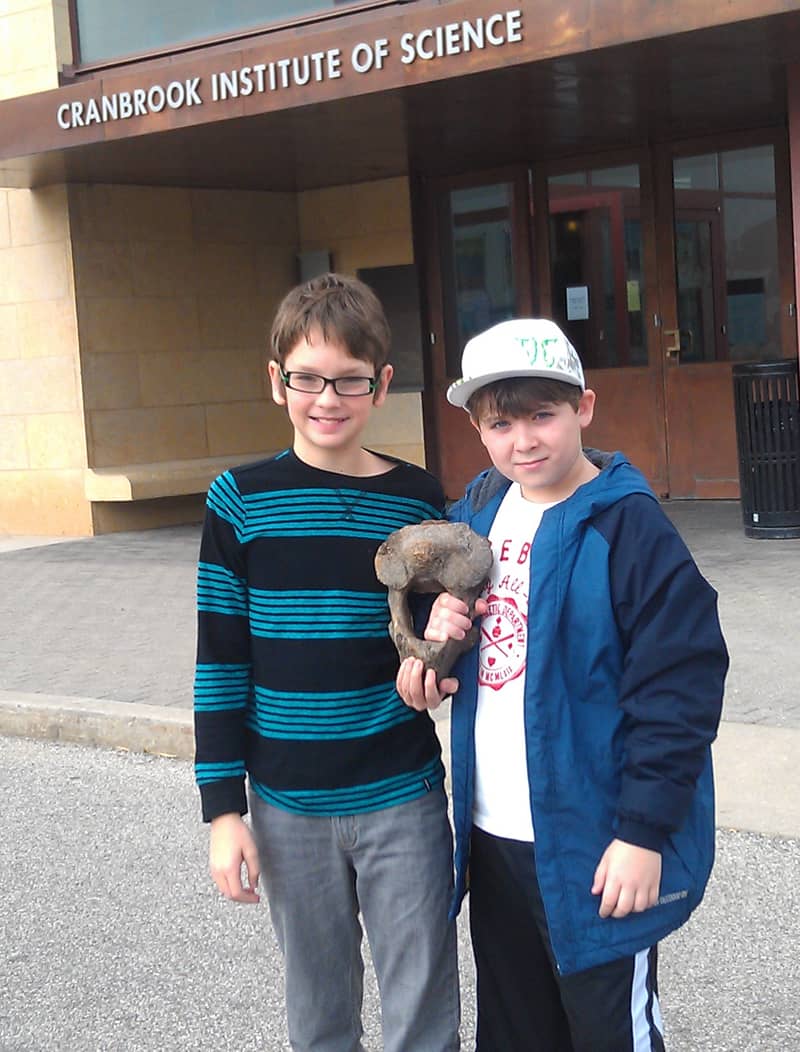When Children Spend Time Outdoors, They Can Make Ancient Archaeological Finds
OutdoorHub Reporters 12.19.12

The spirit of wilderness (or backyard) exploration has recently been renewed in the heart of two young Michigan boys. Two cousins from Shelby Township in southeast Michigan were exploring a creek in 11-year-old Eric Stamatin’s backyard over the summer when the pair found an ancient mastodon bone. The bone was just recently confirmed to be the axis bone of an extinct American mastodon.
John Zawiskie, a geologist and paleontologist at the Cranbrook Institute of Science in Bloomfield Hills confirmed the boys’ find. Stamatin and his 11-year-old cousin Andrew Gainariu from Troy were real paleontologists that day. They were digging for crawfish and building a dam in the stream when they saw what looked like a rock at first. They gave it a second look and they noticed a hole in it, which made them think it was a bone, not a rock.
They put their find on display in their dining room for a few months until a family friend who is a physician identified the bone as a vertebra. She suggested the family contact someone at the Cranbrook Institute. Stamatin’s mother sent Zawiskie a photograph of the bone and a team from Cranbrook took the bone in to conduct further testing.
 It was determined to be between 13,000 and 14,000 years old.
It was determined to be between 13,000 and 14,000 years old.
“There was no mistaking that it was an axis bone, Zawiskie said in a phone interview. The size, morphology and color of the bone also [indicated] it was a mastodon.” The axis bone is a second vertebrae of the spine behind the skull. Zawiskie and his team compared it to other specimens to determine its origin.
Zawiskie and another geologist went back to the stream to look for more evidence of mastodon bones. They also checked the area the stream was draining into, but nothing else was recovered.
“The bone was somewhat abraded so it was moved around by currents,” Zawiskie said. “We were looking at historical aerial photographs. There were some lakes and bogs in the area which have been cleared out, moved out and replaced by subdivisions. That is the usual kind of site for preservation of these things.”
The boys’ excitement was “off the charts,” according to Zawiskie.
“You can imagine, they are internationally known,” he said alluding to the string of media outlets that picked up the story from every corner of the United States to Europe. The bone has been treated with fluids to help consolidate the bone.
In a follow-up email, Zawiskie mused “why should a rather routine discovery with respect to impact on science unleash such a flurry of coverage? Personally I think it was some good news that gave people something to wonder and smile about and that it stirred memories of having such fantasies in childhood.”
The boys will likely get to keep the bone, although it will be on temporary display at the Cranbrook Institute of Science in Michigan between the 26th and 30th of December.

